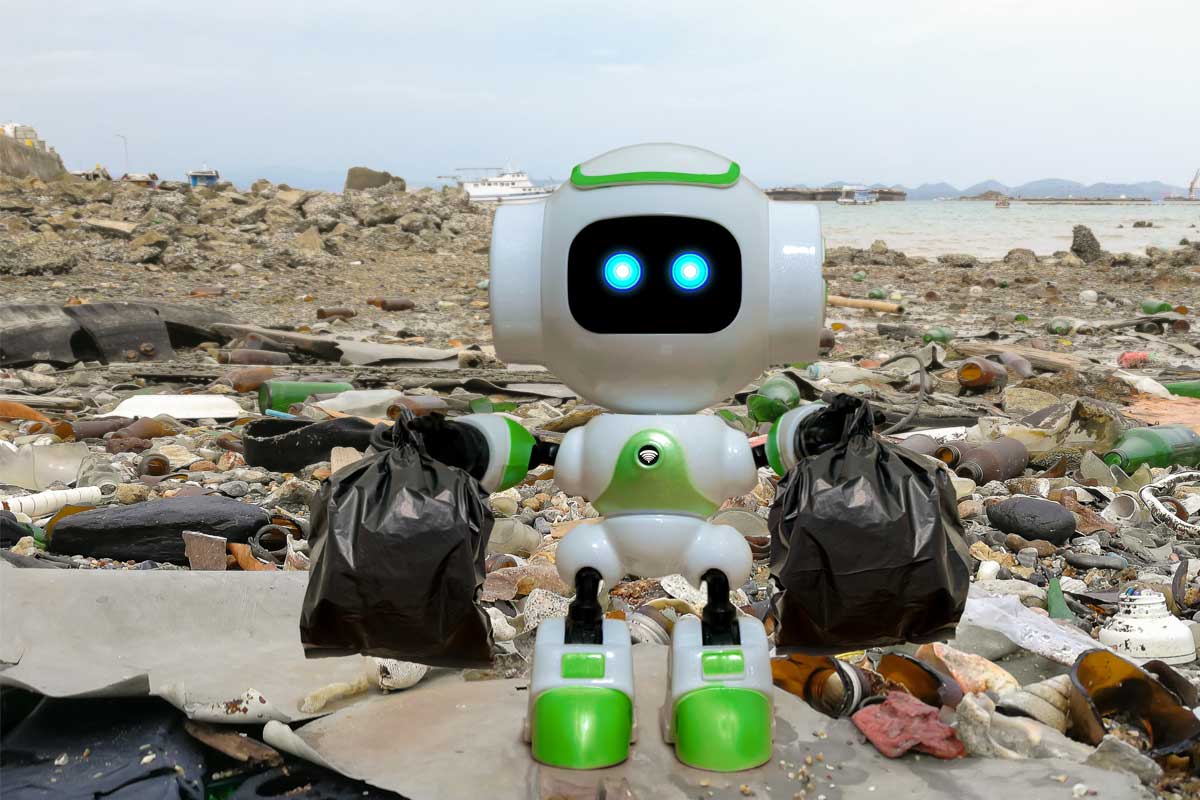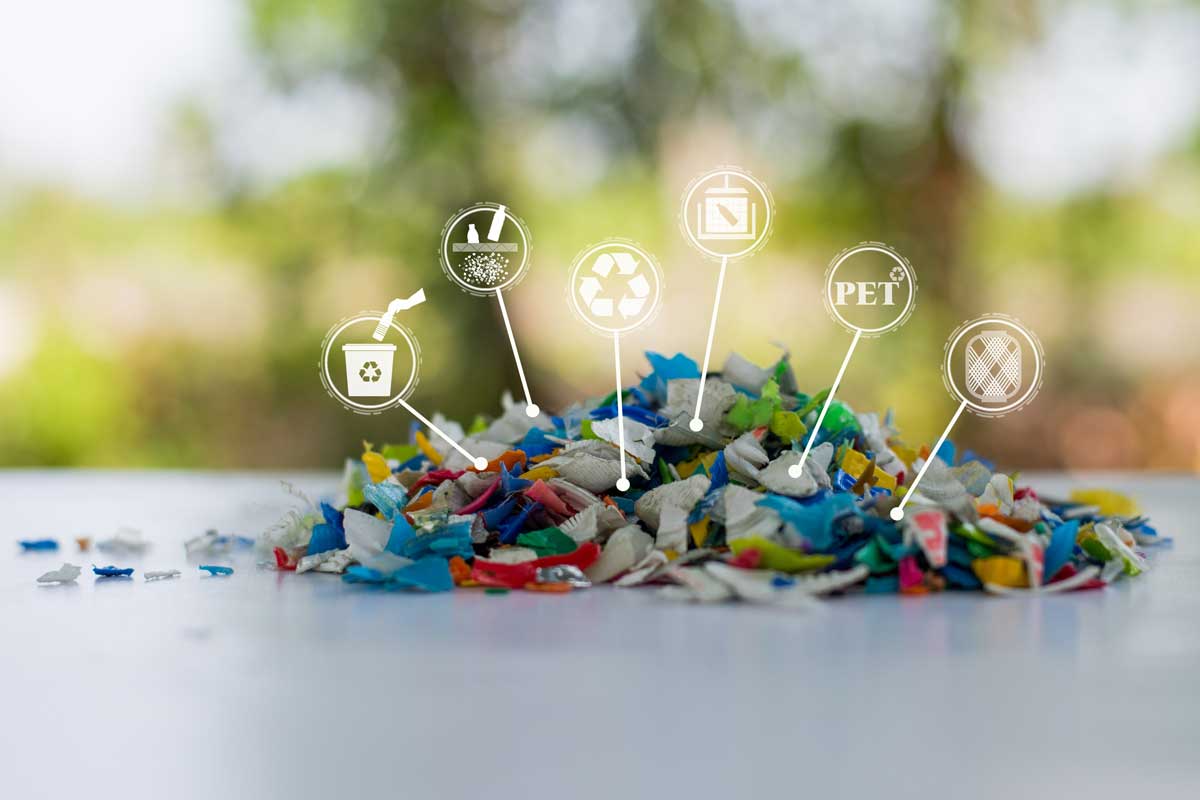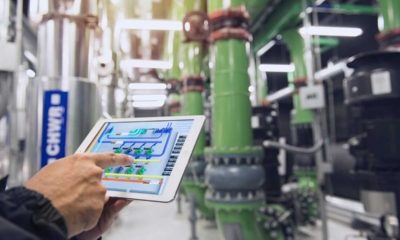
Recycling, when done effectively, can significantly impact environmental sustainability by conserving valuable resources, contributing to a circular economy, reducing landfill waste, and cutting energy used to produce new materials. However, the initial progress of recycling in nations like the United States has largely stalled to a current rate of 32 percent1 due to problems around consumer knowledge, sorting, and contamination.
Artificial intelligence (AI), machine learning (ML), robotics, and automation aim to increase the effectiveness of recycling efforts and improve the country’s chances of reaching the Environmental Protection Agency’s goal of a 50 percent recycling rate by 2030. Let’s look at common recycling problems and how AI could help.
What Is Contamination in Recycling?
As one of the biggest problems facing effective recycling programs, contamination happens when consumers place materials into the wrong recycling bin (such as a glass bottle into a plastic bin). Contamination can also occur when materials aren’t cleaned properly before the recycling process.
Today’s recycling systems aren’t designed to deal well with contamination. According to Columbia University’s Climate School, single-stream recycling—where consumers place all materials into the same bin leads to about one-quarter of the material being contaminated and therefore worthless to buyers2.
Industry insiders also point to a related contamination problem sometimes referred to as aspirational recycling3 or “wishcycling,4” when consumers throw an item into a recycling bin, hoping it will just find its way to its correct location somewhere down the line.
This, unfortunately, rarely happens. Here’s why:
Recycling Breaks Down
When the number of contaminants in a load of recycling becomes too great, the materials will be sent to the landfill, even if some are suitable for recycling, as it costs extra money to sort out the contaminants. Recycling materials have value aside from their benefit to the planet. Contamination reduces or eliminates the quality of recyclables, giving them less market value and further causing the recycling programs to suffer or resulting in increased service costs.
In addition, Americans throw nearly 300,000 tons of shopping bags away each year5. These can later wrap around the parts of a sorting machine and endanger the human sorters tasked with removing them. When consumers throw non-recyclable materials into sorting bins, they can also expose workers to hazardous waste, vector-borne diseases, and other dangerous items.
How AI Could Help
Fortunately, several researchers, startups, and manufacturers are developing innovations fueled by AI to improve the effectiveness of recycling programs.
Pello Cuts the Plastic
Pello Systems has created a system of sensors and cameras to help recyclers reduce contamination by plastic bags6. The system uses AI, ML, and advanced algorithms to identify plastic bags in photos of recycling bin contents and provide facilities with high confidence in that identification.
By identifying and removing contaminants before collection, facilities save vendor contamination fees. They can improve signage and train employees and consumers to reduce the number of plastic bags in the system.
TrashBot Cleans Up
The TrashBot, by Clean Robotics, is a smart “recycling bin of the future” that sorts waste at the point of disposal while providing insight into proper recycling to the consumer7. Through AI, ML, robotics, and computer vision, the Trashbot diverts each deposited item into its proper bin inside, assigning contaminated items to landfill bins or organics into their corresponding bin.
Trashbot also uses a consumer-facing screen that provides real-time, adaptable feedback and custom content reflecting the item and recycling process. In addition to this educational feature, Clean Robotics says that Trashbot provides data-driven reporting to its users and helps facilities boost their sorting accuracy by 95 percent, compared to the typical 30 percent of conventional bins.

Oscar Sorts It Out
Intuitive AI, a Canadian startup, has introduced Oscar Sort, an AI-driven, intuitive, “smart recycling assistant” trained to identify a broad spectrum of beverage and food containers8. Consumers simply point their trash item at a computer screen, and Oscar will tell them if it’s recyclable or compostable.
Adaptable to existing waste and recycling bins, Oscar Sort can be customized to local and facility-specific recycling rules and has been installed in 300 locations, including university cafeterias, sports stadiums, and retail stores.
AMP Cortex Doubles the Picks
AMP Robotics has built a sorting innovation that recycling programs could place further down the line in the recycling process. Their AMP Cortex is a high-speed robotic sorting system guided by AI9.
AMP’s AI platform uses computer vision to recognize patterns of specific recyclable materials within the typically complex waste stream of folded, smashed, and tattered objects. Their robots perform physical tasks of sorting, picking, and placing materials to achieve what they say has a 99 percent accuracy and 80 picks per minute (the average human makes roughly 40 picks per minute.)
The Outlook of AI in Recycling Management
As AI continues to make strides in recycling management, the outlook is promising:
AI-driven sensors and robotics will provide real-time data analytics, enabling recycling facilities to make data-based decisions for process optimization. This will likely expand into other areas, such as predictive maintenance, supply chain optimization, and adaptive recycling strategies. The widespread adoption of AI in recycling has the potential to contribute significantly to global sustainability goals, reducing environmental impact and fostering a more circular economy.
As innovators continue to invest in AI-driven solutions, we can anticipate a transformative impact on recycling practices, accelerating our journey towards a more sustainable planet.
How Ambiq is Contributing
Utilizing key technologies like AI to take on the world’s larger problems such as climate change and sustainability is a noble task, and an energy consuming one. Performing AI and object recognition to sort recyclables is complex and will require an embedded chip capable of handling these features with high efficiency.
Ambiq creates a wide range of system-on-chips (SoCs) that support AI features and even has a start in optical identification support. Implementing sustainable recycling practices should also use sustainable technology, and Ambiq excels in powering smart devices with previously unseen levels of energy efficiency that can do more with less power. Learn more about the various applications Ambiq can support.
Sources
1 America Recycles Day | 2023
2 Recycling in the U.S. Is Broken. How Do We Fix It? | March 13, 2020&
3 The Waste of Aspirational Recycling | February 6, 2023
4 What Is Wishcycling? Two Waste Experts Explain | January 21, 2022
5 Recycling Statistics | 2023
6 Pello Systems | 2023
7 Clean Robotics | 2023
8 Intuitive AI | 2023
9 AMP Robotics | 2023


